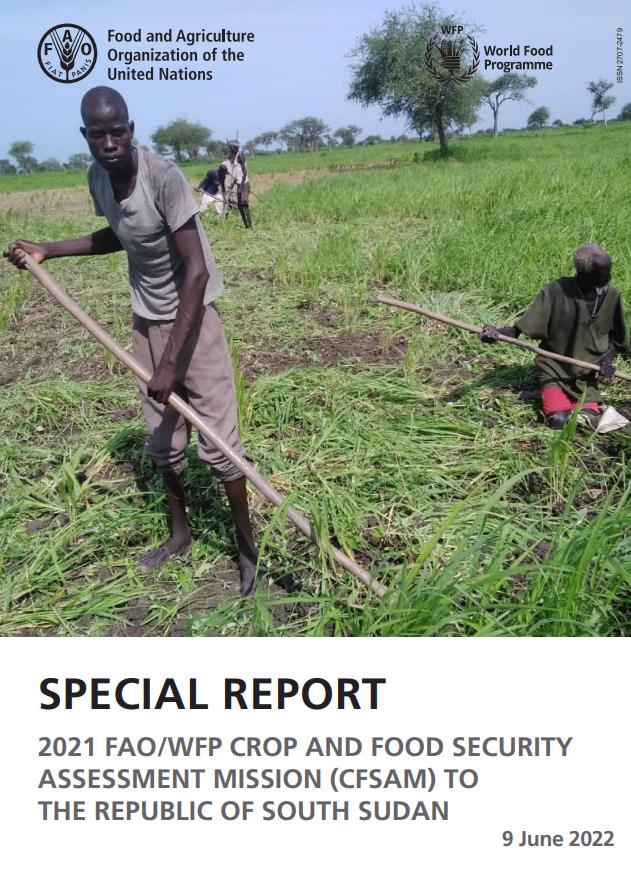
Special Report – 2021 FAO/WFP Crop and Food Security Assessment Mission (CFSAM) to South Sudan
09/06/2022
The annual FAO/WFP Crop and Food Security Assessment Mission (CFSAM) was conducted from 7 to 17 December 2021 to estimate the cereal production in South Sudan during 2021 and assess the overall food security situation in the country. The CFSAM reviewed the findings of several crop assessment missions conducted at planting and harvest time from June to December 2021 in different agroecological zones of the country. All missions were carried out by an agricultural task force team that comprised staff from the Ministry of Agriculture and Food Security (MoAFS), the National Bureau of Statistics (NBS), the Food and Agriculture Organization of the United Nations (FAO) and the respective State Ministry of Agriculture (SMoA), abiding to health protocols for the protection from the COVID-19 pandemic. Task force team members have been trained during the past years to conduct rapid assessments using established CFSAM instruments, protocols and techniques, including walking transects, scoring standing crops according to the pictorial evaluation tool (PET), yield levels and livestock body condition, performing key informant interviews and farmer case studies.
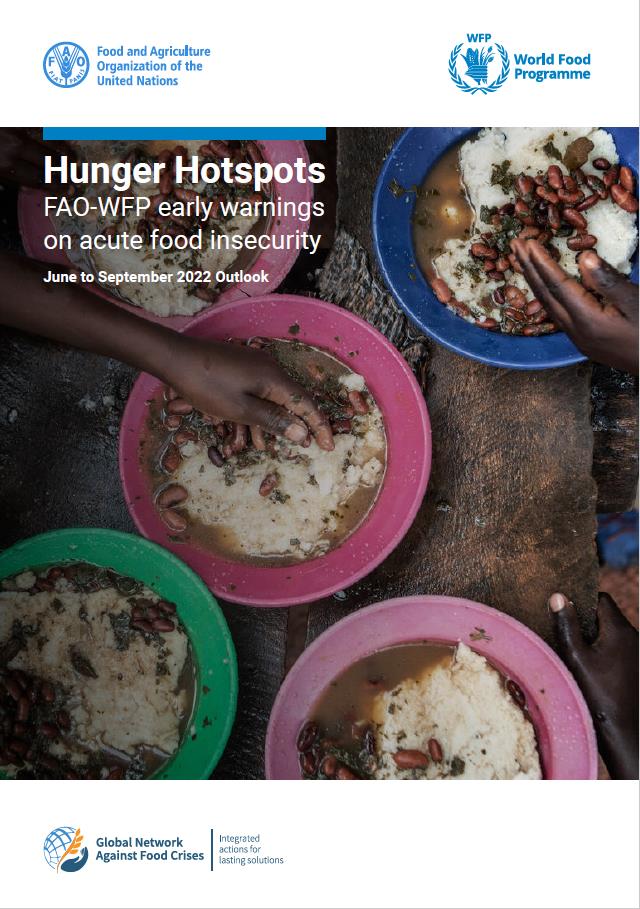
Hunger Hotspots - FAO-WFP early warnings on acute food insecurity: June to September 2022 Outlook
06/06/2022
The document provides the results of a joint FAO-WFP early warning analysis of acute food insecurity hotspots, highlights countries that are at risk of significant food security deterioration, and in particular acute hunger and associated malnutrition. The analysis takes into account all major drivers of food insecurity. It provides a forward-looking perspective, outlining the likely evolution of impacts over the next three or so months aiming to inform urgent action to safeguard food security of the most vulnerable communities in these locations.
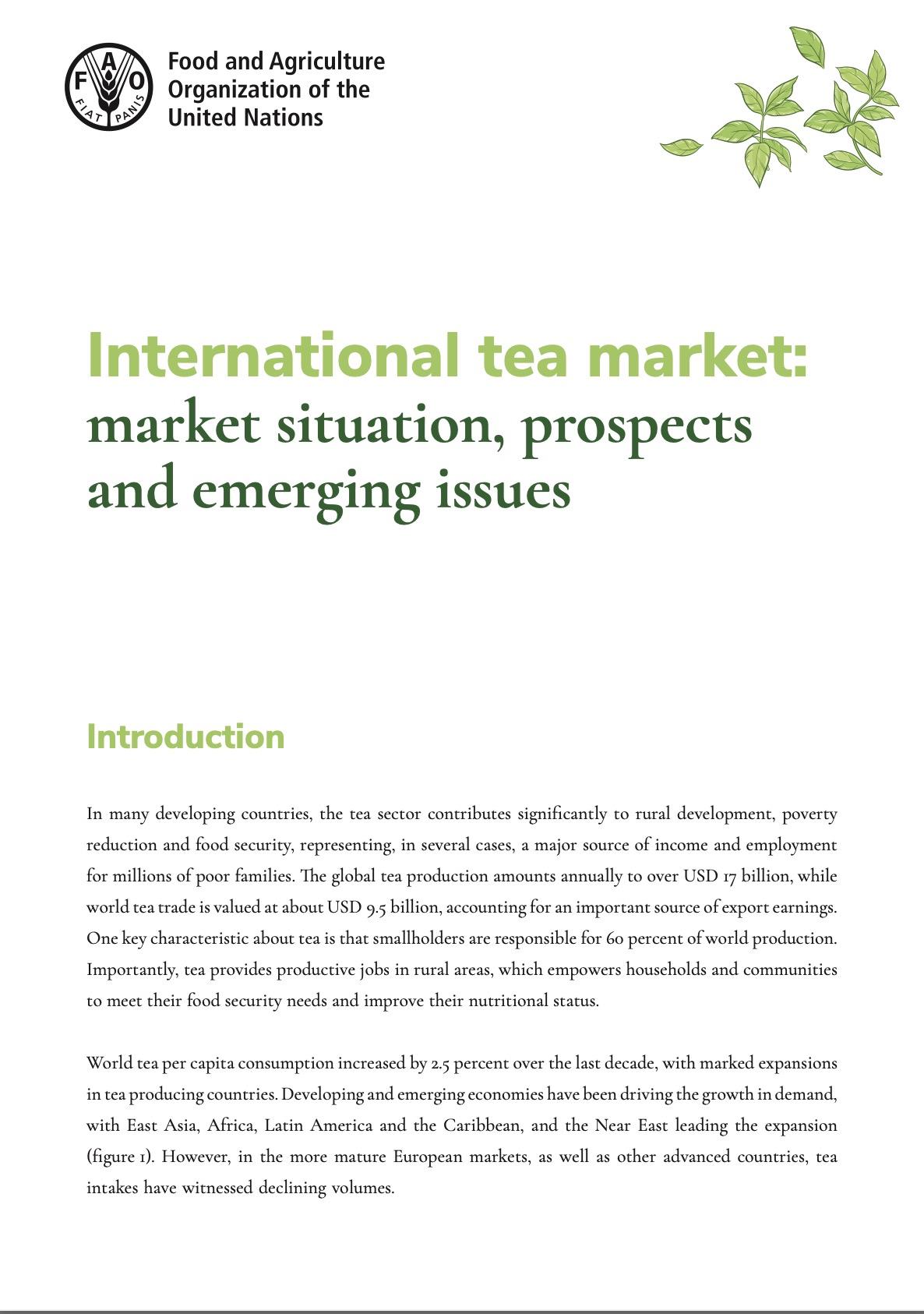
International tea market: market situation, prospects and emerging issues
19/05/2022
In many developing countries, the tea sector contributes significantly to rural development, poverty reduction and food security, representing, in several cases, a major source of income and employment for millions of poor families. The global tea production amounts annually to over USD 17 billion, while world tea trade is valued at about USD 9.5 billion, accounting for an important source of export earnings.
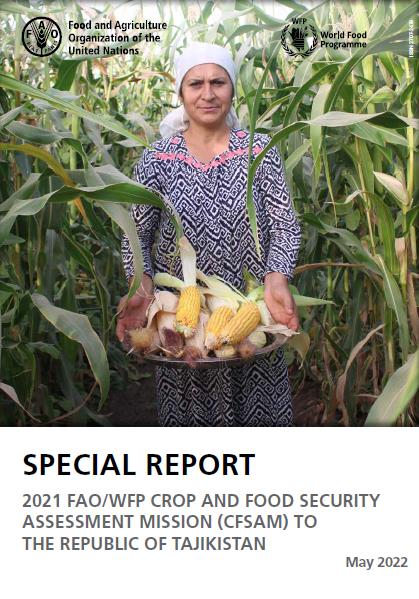
Special Report – 2021 FAO/WFP Crop and Food Security Assessment Mission (CFSAM) to the Republic of Tajikistan
17/05/2022
Following an official request by the Ministry of Agriculture of the Republic of Tajikistan on 4 May 2021, FAO and WFP carried out an abridged approach to the Crop and Food Security Assessment Mission (CFSAM) to the country. After thorough planning and preparation, the two agencies assessed the 2021 food crop production, estimated the food import requirements for the 2021/22 marketing year and analysed the 2021 food security situation at household level. The mission’s core team was composed of FAO and WFP staff members with support from a contracted service provider for conducting key informant interviews, community interaction and a telephone interview-based household survey.
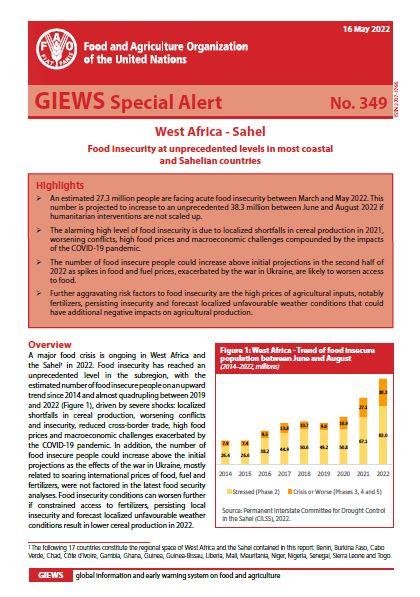
GIEWS Special Alert No. 349 - West Africa - Sahel, 16 May 2022
16/05/2022
An estimated 27.3 million people are facing acute food insecurity between March and May 2022. This number is projected to increase to an unprecedented 38.3 million between June and August 2022 if humanitarian interventions are not scaled up. The alarming high level of food insecurity is due to localized shortfalls in cereal production in 2021, worsening conflicts, high food prices and macroeconomic challenges compounded by the impacts of the COVID-19 pandemic. The number of food insecure people could increase above initial projections in the second half of 2022 as spikes in food and fuel prices, exacerbated by the war in Ukraine, are likely to worsen access to food. Further aggravating risk factors to food insecurity are the high prices of agricultural inputs, notably fertilizers, persisting insecurity and forecast localized unfavourable weather conditions that could have additional negative impacts on agricultural production.
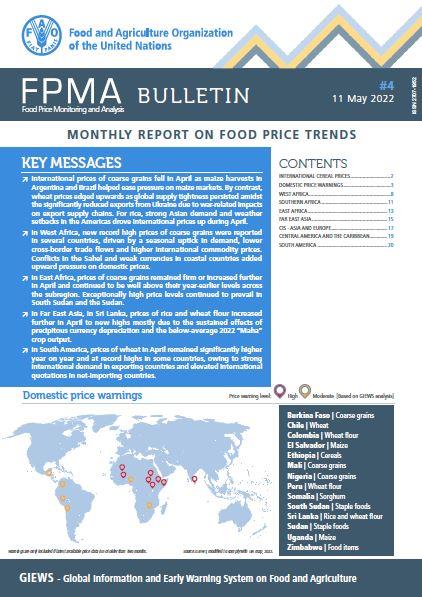
Food Price Monitoring and Analysis (FPMA) Bulletin #4, 11 May 2022
11/05/2022
International prices of coarse grains fell in April as maize harvests in Argentina and Brazil helped ease pressure on maize markets. By contrast, wheat prices edged upwards as global supply tightness persisted amidst the significantly reduced exports from Ukraine due to war-related impacts on export supply chains. For rice, strong Asian demand and weather setbacks in the Americas drove international prices up during April. In West Africa, new record high prices of coarse grains were reported in several countries, driven by a seasonal uptick in demand, lower cross‑border trade flows and higher international commodity prices. Conflicts in the Sahel and weak currencies in coastal countries added upward pressure on domestic prices. In East Africa, prices of coarse grains remained firm or increased further in April and continued to be well above their year-earlier levels across the subregion. Exceptionally high price levels continued to prevail in South Sudan and the Sudan. In Far East Asia, in Sri Lanka, prices of rice and wheat flour increased further in April to new highs mostly due to the sustained effects of precipitous currency depreciation and the below-average 2022 “Maha” crop output. In South America, prices of wheat in April remained significantly higher year on year and at record highs in some countries, owing to strong international demand in exporting countries and elevated international quotations in net-importing countries.
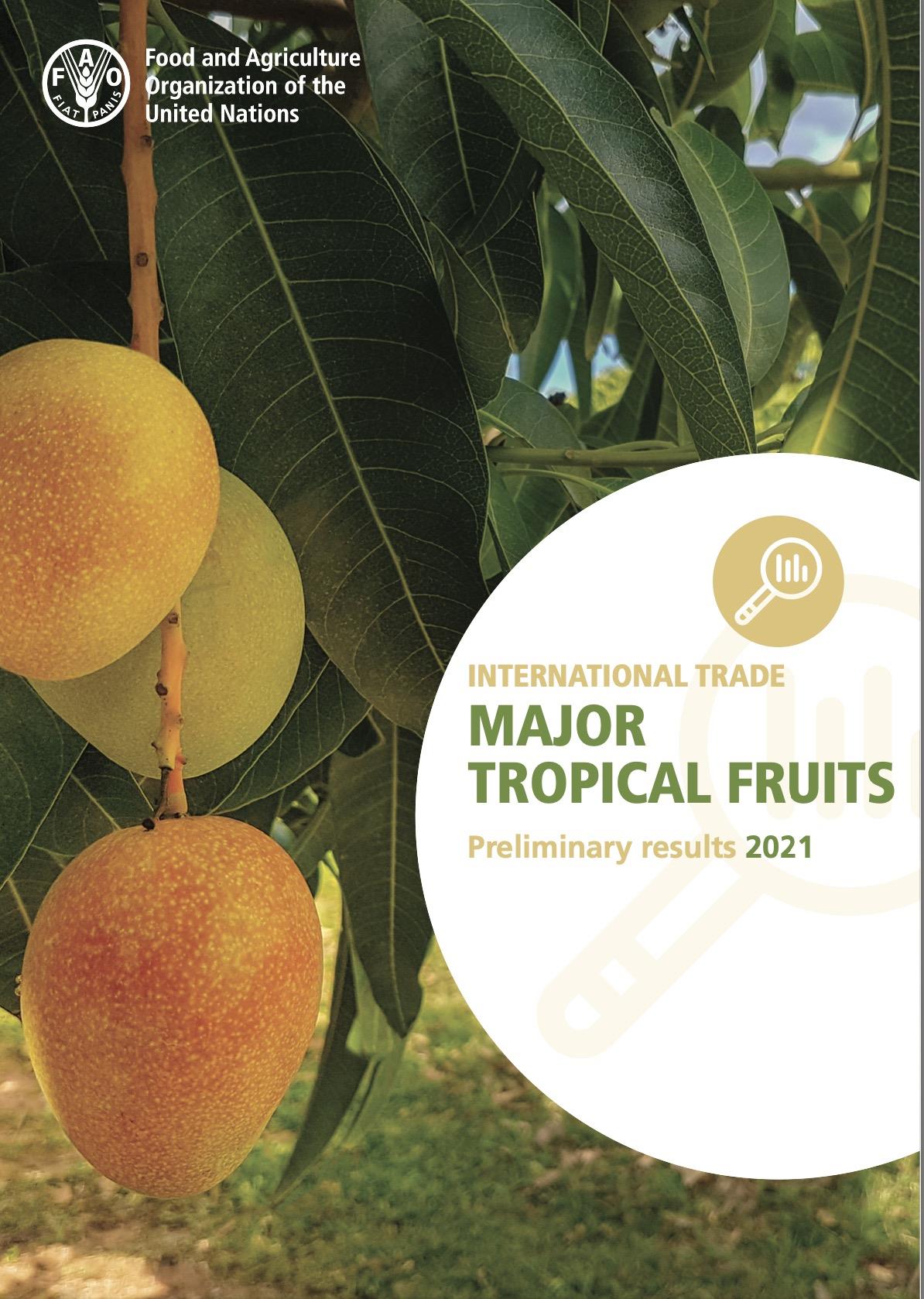
Major Tropical Fruits - Preliminary results 2021
10/05/2022
The Tropical Fruits Market Review is issued on an annual basis to Members and Observers of the Sub-Group on Tropical Fruits of the Intergovernmental Group on Bananas and Tropical Fruits, which is a subsidiary body of the Committee on Commodity Problems (CCP). This document provides preliminary estimates for the 2020 market situation for the following major tropical fruits: Avocado, Mango, Papaya and Pineapple. Statistical tables related to imports and exports are also provided in the annex.
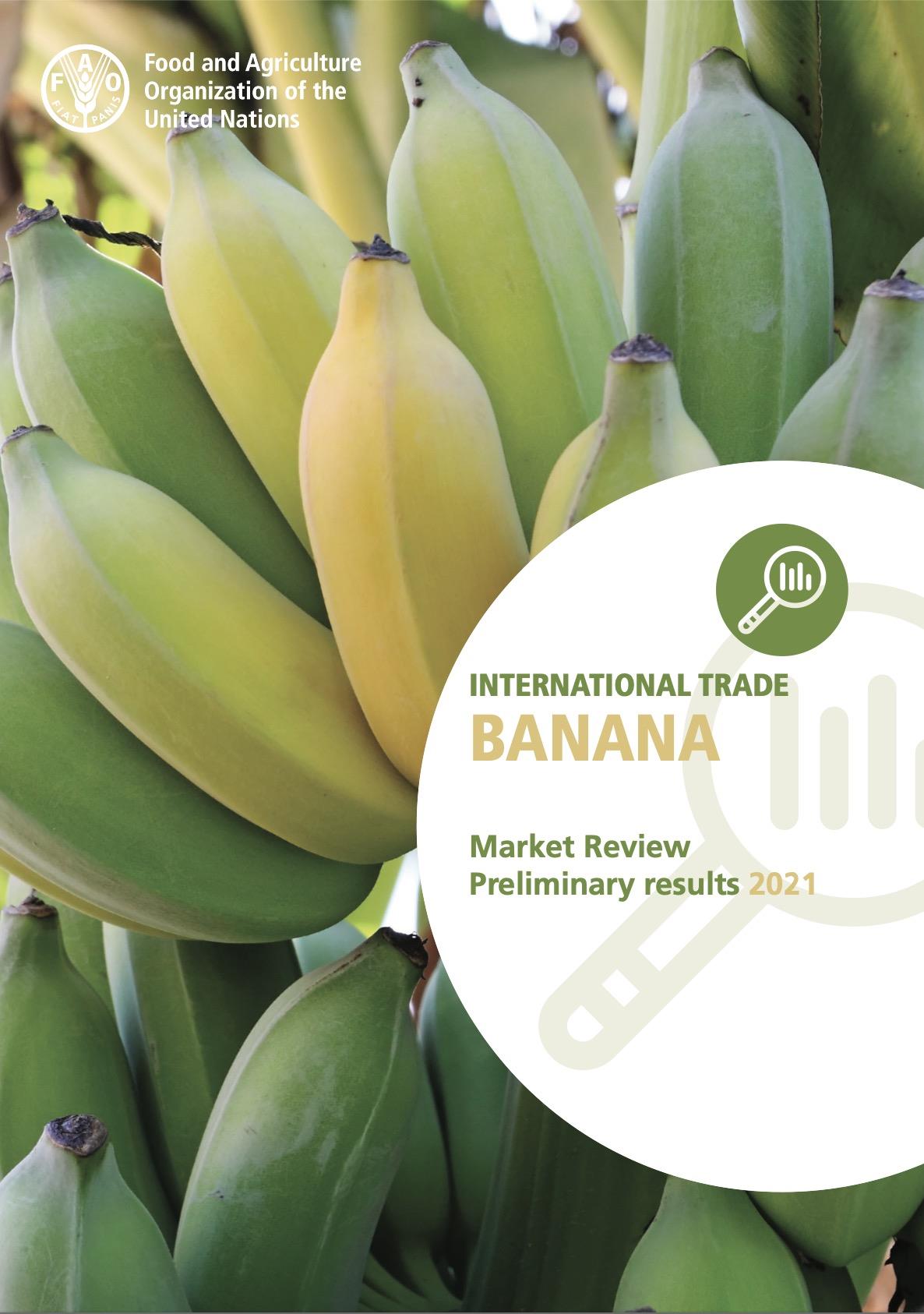
Banana Market Review Preliminary results 2021
09/05/2022
The Banana Market Review is issued on an annual basis to Members and Observers of the Sub-Group on Bananas of the Intergovernmental Group on Bananas and Tropical Fruits, which is a subsidiary body of the Committee on Commodity Problems (CCP). This document provides preliminary estimates for the 2020 market situation for the banana commodity. Imports and exports statistical tables are included.
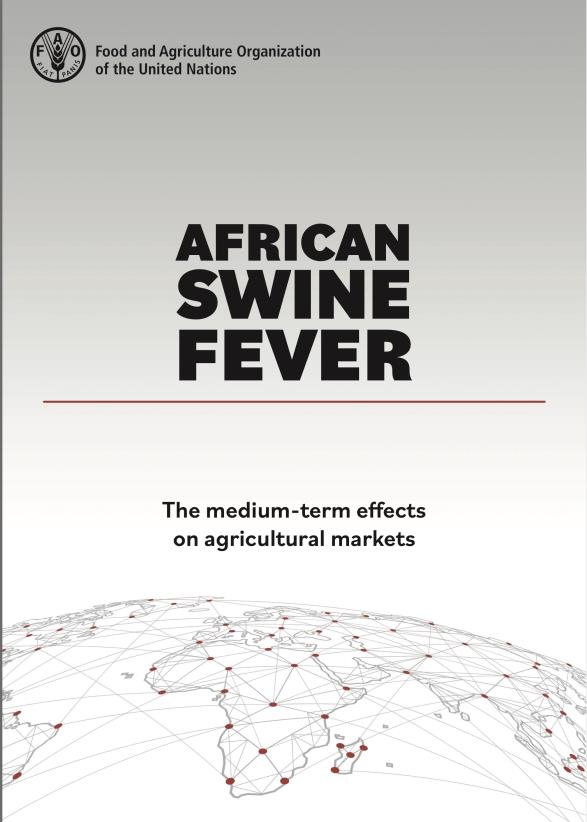
African swine fever: The medium-term effects on agricultural markets
02/05/2022
This paper aims to gauge the complex cross-commodity and cross-country effects of the African swine fever (ASF) over the medium-term, that is, within a ten-year time horizon. While focusing on meat and feed markets, it also assesses the effects of ASF on all agricultural markets. The results are based on a number of counterfactual runs undertaken with the Aglink-Cosimo model, a global partial equilibrium framework jointly maintained by the secretariats of the Food and Agriculture Organization of the United Nations (FAO) and the Organization for Economic Cooperation and Development (OECD). The results will help decision makers to understand the extent to which ASF is likely to affect the various agricultural markets and help them prepare for the challenges and the opportunities that may arise from a further spread of the disease.
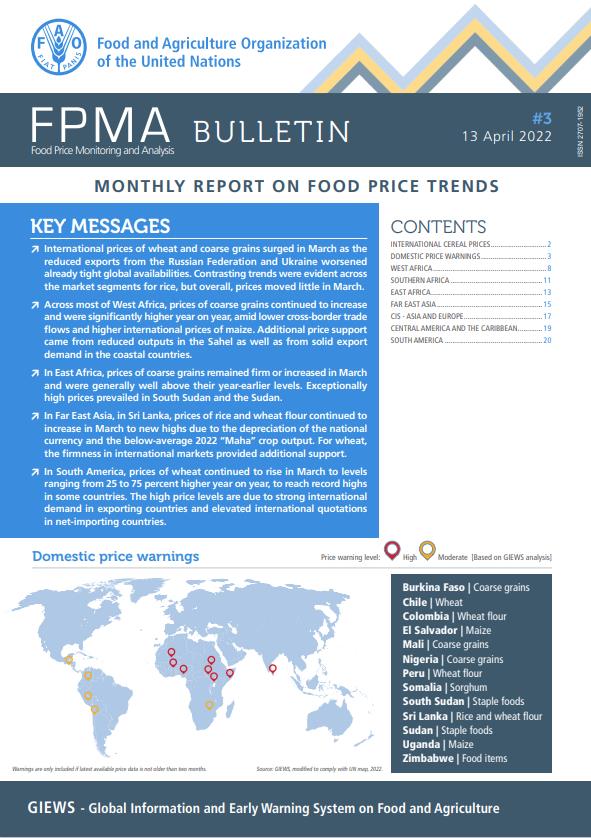
Food Price Monitoring and Analysis (FPMA) Bulletin #3, 12 April 2022
13/04/2022
International prices of wheat and coarse grains surged in March as the reduced exports from the Russian Federation and Ukraine worsened already tight global availabilities. Contrasting trends were evident across the market segments for rice, but overall, prices moved little in March. Across most of West Africa, prices of coarse grains continued to increase and were significantly higher year on year, amid lower cross-border trade flows and higher international prices of maize. Additional price support came from reduced outputs in the Sahel as well as from solid export demand in the coastal countries. In East Africa, prices of coarse grains remained firm or increased in March and were generally well above their year-earlier levels. Exceptionally high prices prevailed in South Sudan and the Sudan. In Far East Asia, in Sri Lanka, prices of rice and wheat flour continued to increase in March to new highs due to the depreciation of the national currency and the below-average 2022 “Maha” crop output. For wheat, the firmness in international markets provided additional support. In South America, prices of wheat continued to rise in March to levels ranging from 25 to 75 percent higher year on year, to reach record highs in some countries. The high price levels are due to strong international demand in exporting countries and elevated international quotations in net-importing countries.
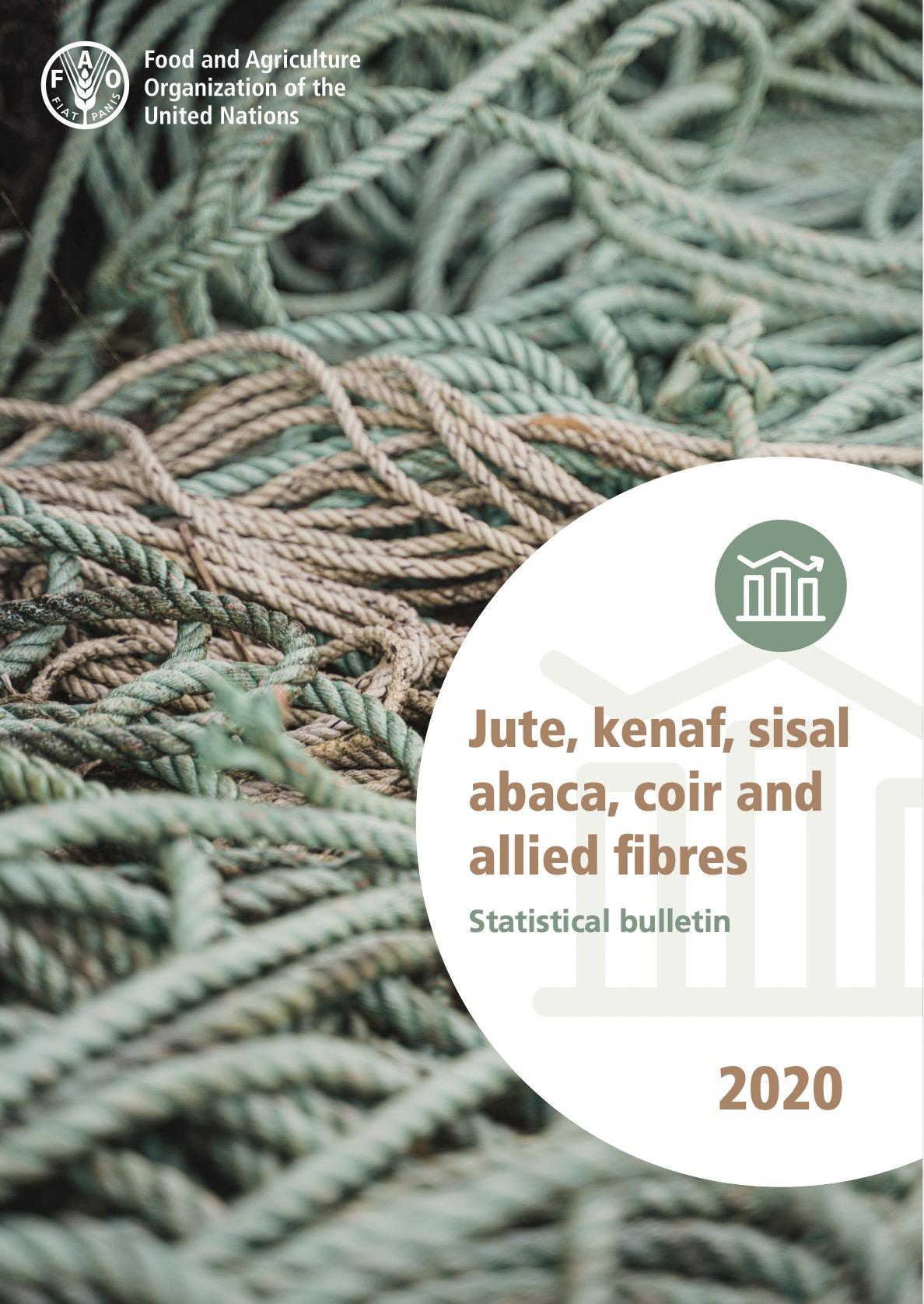
Jute, Kenaf, Sisal, Abaca, Coir and Allied fibres Statistical Bulletin 2020
06/04/2022
The Market and Policy Analysis of Raw Materials, Horticulture and Tropical Products Team (RAMHOT), provides economic data and analysis on major agricultural raw materials and tropical products, including hard fibres (abaca, coir and sisal), jute, kenaf and allied fibres. The tables contained in this document bring together governments’ replies to the latest questionnaires, supplemented by other data available to the Secretariat at 31 December 2020.
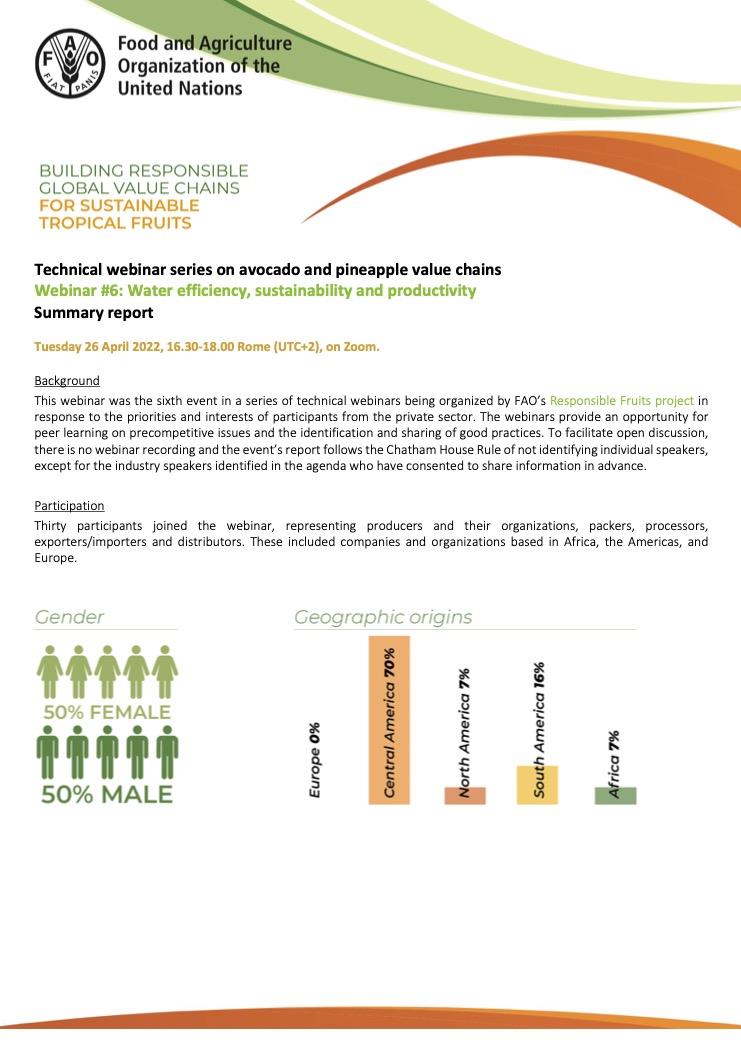
Webinar #6: Water efficiency, sustainability and productivity. 26 April 2022
30/03/2022
This was the sixth in a series of technical webinars being organized by FAO’s Responsible Fruits project in response to the priorities and interests of participants from the private sector. The webinars will provide an opportunity for peer learning on precompetitive issues, and the identification and sharing of good practices
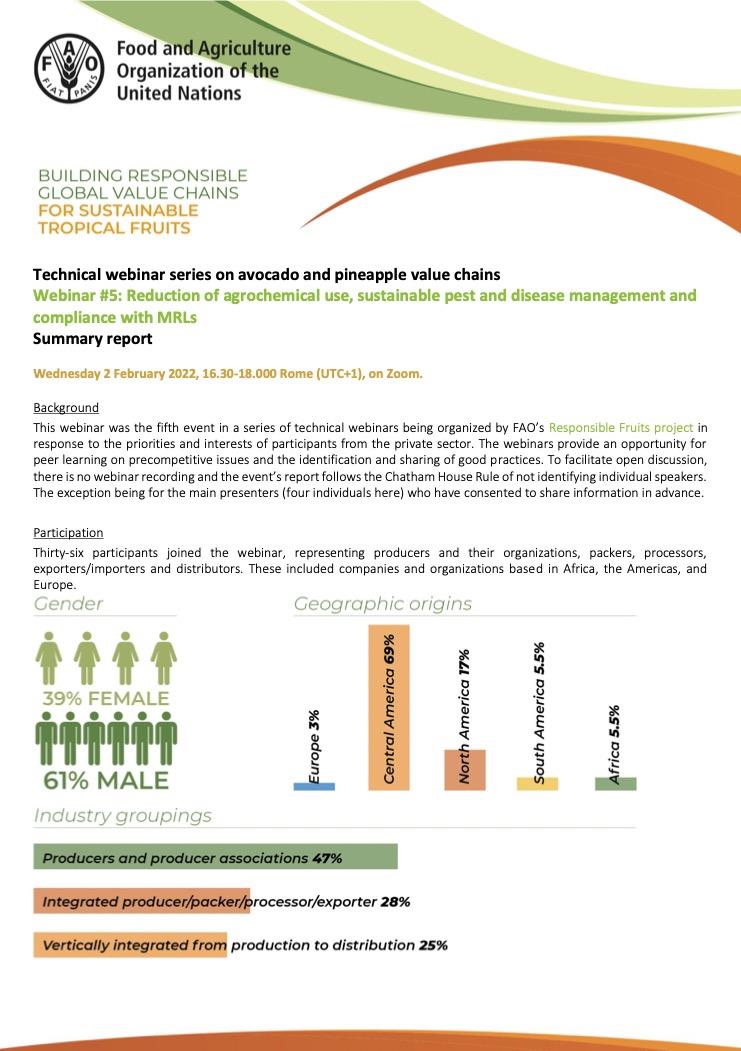
Webinar #5: Reduction of agrochemical use, sustainable pest and disease management and compliance with MRLs - 2 February 2022
24/03/2022
This was the fifth in a series of technical webinars being organized by FAO’s Responsible Fruits project in response to the priorities and interests of participants from the private sector. The webinars will provide an opportunity for peer learning on precompetitive issues, and the identification and sharing of good practices
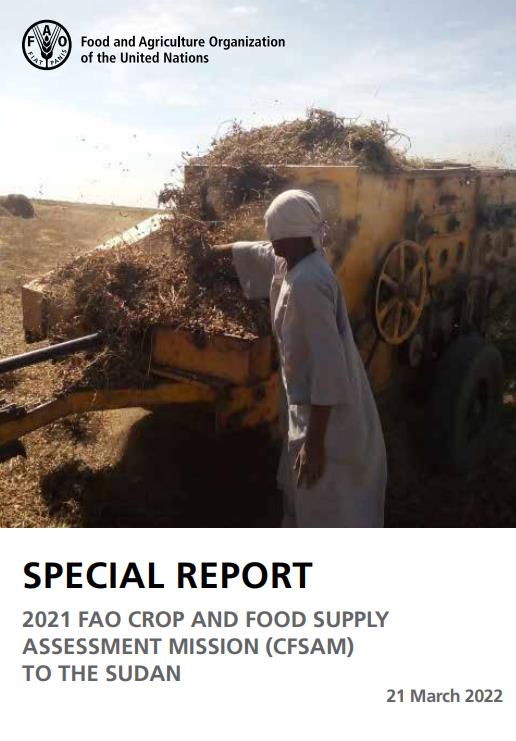
Special report – 2021 FAO Crop and Food Supply Assessment Mission to the Sudan
21/03/2022
Between 19 December 2021 and 14 January 2022, following a request by the Ministry of Agriculture and Forest (MoA&F), the Food Security Technical Secretariat (FSTS), assisted by the Food and Agriculture Organization of the United Nations (FAO), the World Food Programme (WFP) and the United States Agency for International Development (USAID), carried out its annual Crop and Food Supply and Assessment Mission (CFSAM) to determine the crop production and the food supply situation throughout the 18 states of the country.
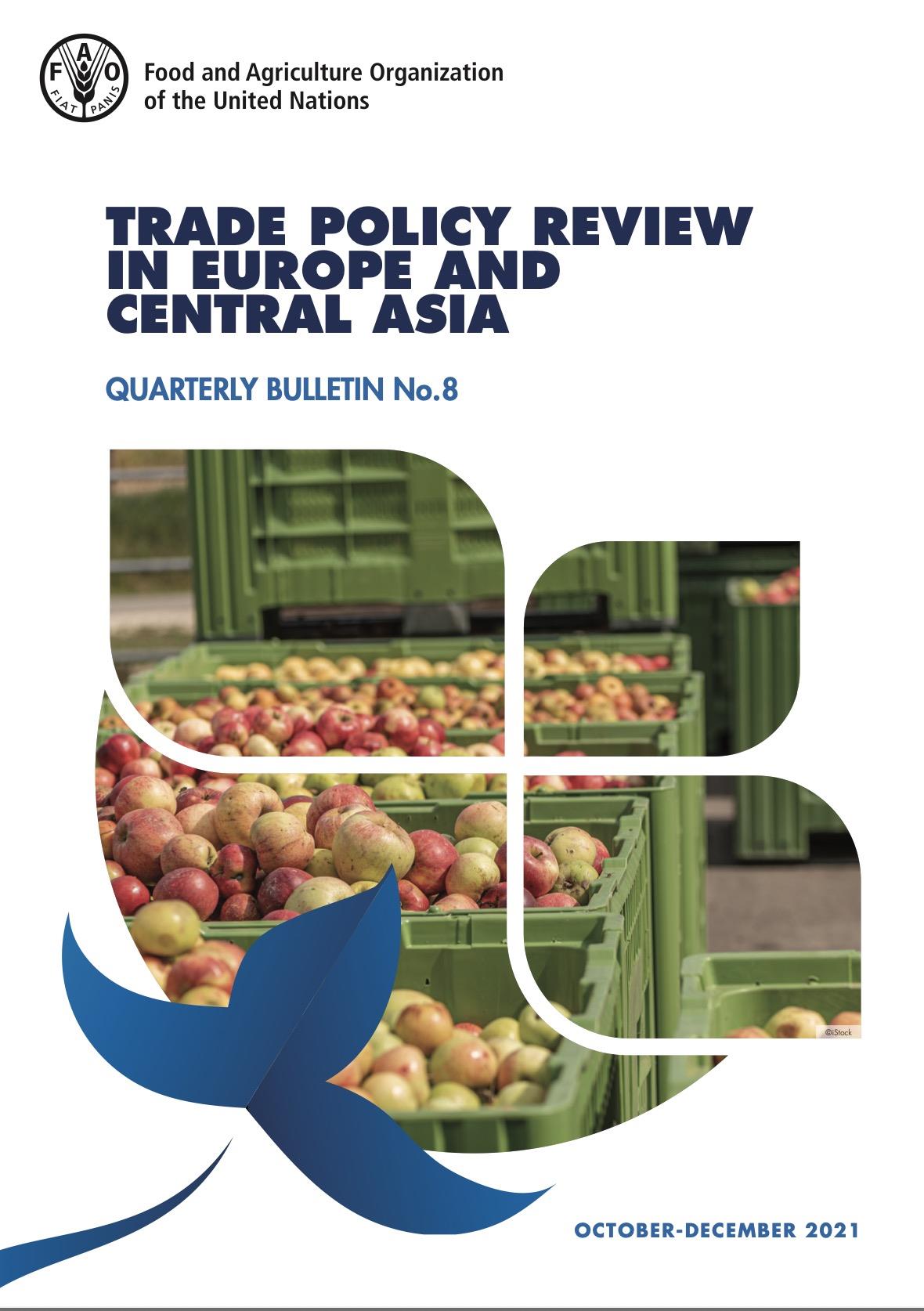
Trade Policy Review in Europe and Central Asia - Quarterly Bulletin No. 8
16/03/2022
This quarterly bulletin features agricultural trade policy changes in the region. It provides current trade measures, agreements, statistics and articles by experts covering trade-related issues in countries across the region, and it is sent to members of the Agricultural Trade Expert Network.
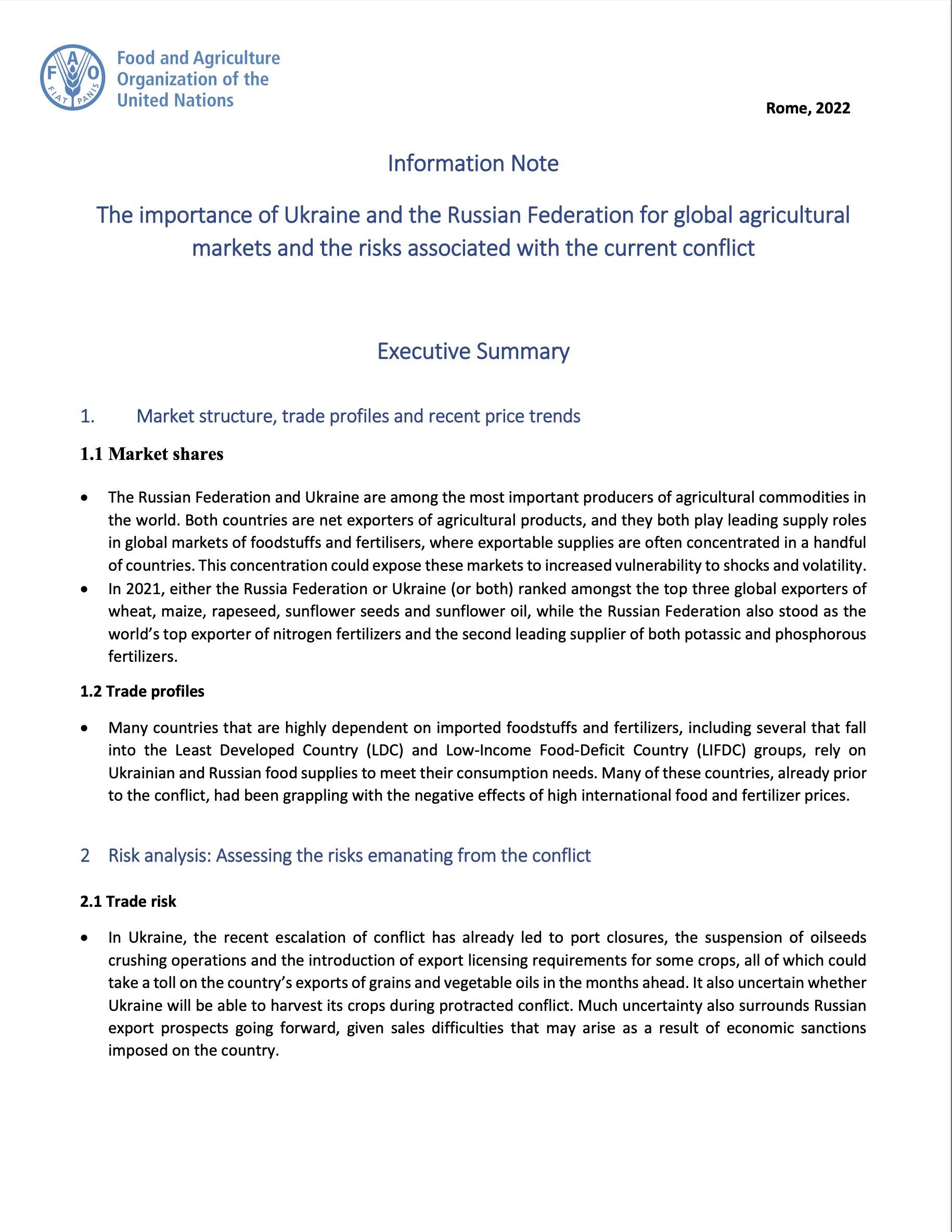
The importance of Ukraine and the Russian Federation for global agricultural markets and the risks associated with the current conflict
11/03/2022
The Russian Federation and Ukraine are among the most important producers of agricultural commodities in the world. Both countries are net exporters of agricultural products, and they both play leading supply roles in global markets of foodstuffs and fertilisers, where exportable supplies are often concentrated in a handful of countries. This concentration could expose these markets to increased vulnerability to shocks and volatility. In 2021, either the Russia Federation or Ukraine (or both) ranked amongst the top three global exporters of wheat, maize, rapeseed, sunflower seeds and sunflower oil, while the Russian Federation also stood as the world’s top exporter of nitrogen fertilizers and the second leading supplier of both potassic and phosphorous fertilizers.
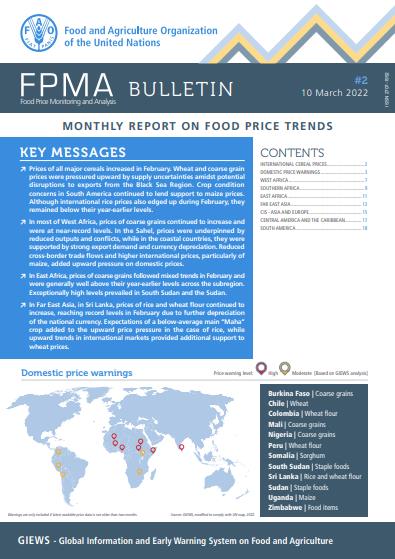
Food Price Monitoring and Analysis (FPMA) Bulletin #2, 10 March 2022
10/03/2022
Prices of all major cereals increased in February. Wheat and coarse grain prices were pressured upward by supply uncertainties amidst potential disruptions to exports from the Black Sea Region. Crop condition concerns in South America continued to lend support to maize prices. Although international rice prices also edged up during February, they remained below their year-earlier levels. In most of West Africa, prices of coarse grains continued to increase and were at near-record levels. In the Sahel, prices were underpinned by reduced outputs and conflicts, while in the coastal countries, they were supported by strong export demand and currency depreciation. Reduced cross-border trade flows and higher international prices, particularly of maize, added upward pressure on domestic prices. In East Africa, prices of coarse grains followed mixed trends in February and were generally well above their year-earlier levels across the subregion. Exceptionally high levels prevailed in South Sudan and the Sudan. In Far East Asia, in Sri Lanka, prices of rice and wheat flour continued to increase, reaching record levels in February due to further depreciation of the national currency. Expectations of a below-average main “Maha” crop added to the upward price pressure in the case of rice, while upward trends in international markets provided additional support to wheat prices.



